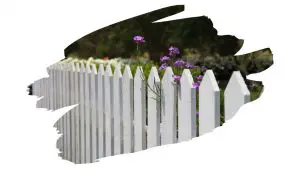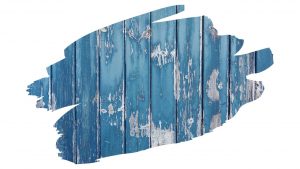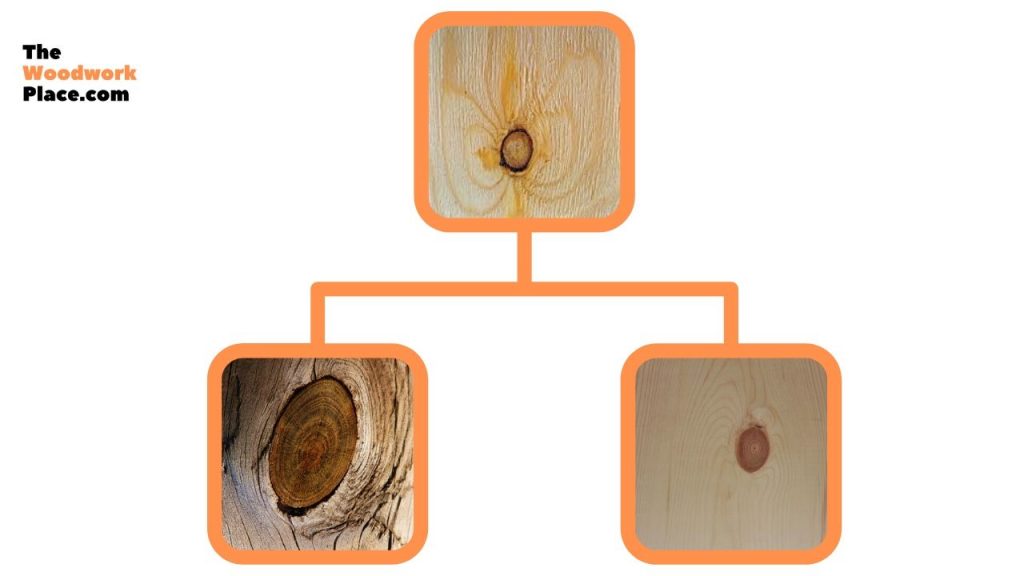Using pressure treated wood for outdoor projects – such as decking and front doors – is essential.
That’s because pressure treated wood is great at resisting rot and wood-nesting bugs.
But the after effect of pressure-treating wood isn’t particularly pleasing to look at.
So its no wonder you’re asking yourself; can you paint pressure treated wood?
The good news is, yes you can. However, before you rush off to start painting you need to consider a few things. Things such as;
- Have you first cleaned the wood surface of all dirt and grime?
- Have you given the wood enough time to dry out?
- Are you using the right type of primer on the wood?
- Have you given the primer enough time to dry too?
If you can answer YES to all of those questions, then you are good to go.
But do you really need to paint pressure treated wood?
First things first, take a moment to consider whether or not you need to paint the wood in the first place.
The process of painting this type of wood requires a fair bit of preparation – and some regular upkeep afterwards.
But if you’ve thought about it, and your heart is still set on adding a little more color to the wood, then read on to get the full scoop on how to paint pressure treated wood…

This post may contain affiliate links to products that we receive a commission for (at no additional cost to you). Learn more here.
How Long Should You Wait Before Painting Pressure Treated Wood?
There are two parts to preparing the wood for painting; cleaning the wood and then letting the wood thoroughly dry out.
Cleaning The Wood
Cleaning pressured treated wood is pretty simple and straight forward.
A bucket of soapy water and a clean paint brush are all you need to get the job done.
Brush along the grain to remove any collected debris on the surface.
Afterward, give the wood a rinse clean with water.
Related Post: Railroad Ties Vs Pressure Treated Fence Posts: Which One’s Best For Your Garden?
Letting The Wood Dry
Now that the wood is clean of dust and dirt, you need to give that lumber some time to thoroughly dry out.
Why? Because if you paint the wood while the interior of the wood is still moist, then that moisture will – over time – release and push up through the paint. This in turn will cause the paint to peel away from the wood.

So how do you know if wood is dry enough to paint? There are two methods you can use;
A). Simply Wait It Out
It takes up to 4 weeks for pressure treated wood to fully dry in warm weather. Longer still (think months, not weeks), if wet weather conditions keep drenching the lumber every now and again.
B). Spritz Test
If you want to determine right away whether or not the pressure treated lumber is dry, (without having to wait on Old Father Time), then you can test the dryness of the wood yourself.
Grab a spray bottle and fill it with some water. Now simply go and spritz a sprinkle of water onto the surface of the wood.
If the water is absorbed by the wood in under 10 minutes, then it is dry enough for you to get painting.
If the water, however, stays pooled on the surface, then that timber needs some more time to dry out.
Seasoning is the term most popularly used when referring to drying out wood. And the aim of seasoning is to reduce the amount of moisture naturally found in wood, making it more stable.
We’ve got some great seasoning tips for timber in our post here: How To Season Wood (7 Tips)
How do you prepare pressure treated wood for painting?
Okay, so now you have confirmed that the wood is fully dry and ready for painting.
The next step in the process involves you coating that wood in a quality primer before you start painting.
Just why is using primer so important? Well, this undercoat layer helps the paint adhere to the surface of the wood.
Also, the primer stops the paint from soaking into the wood and flaking away over time.
What is the best primer for pressure treated wood?
That depends on what type of primer you plan on using.
Modern latex primers are water-based, dry fast, and are less likely to crack under pressure. This also means that they tend to have a bit of flexibility in them – even after drying.
Traditional primers, on the other hand, are oil-based, give off fumes, and take longer to dry. However, oil based primers can tend to be better at priming treated wood for painting.
Whichever primer type you opt for, a couple coats of the primer (maybe even three) should be enough to get the job done.
Do you need to seal pressure treated wood?
If you have a lot of imperfections throughout the grain of the wood, then you need to use a knot sealer first before you apply the primer.
‘Knots’ are circular dark spots found along the wood grain. If you don’t seal up these knots then sap can leak out of them and bleed through the paint.
Not sure what a knot looks like? Have a look at the pictures below:

And then for a quick guide to sealing wood knots, check out this video:
What kind of paint do you use on pressure treated wood?
A good latex paint is your best bet when it comes to painting pressure treated wood.
That’s because latex paint is better at staying on smooth wood surfaces (compared to oil based paint).
Check out the key differences between Oil Paint and Latex Paint by watching the short video below:
How Do You Keep Pressure Treated Wood Looking New? After Care Tips
Great! So you’ve completed the job of painting that stairs or fence, and now you want to make sure that your hard work lasts a lifetime.
Well, we here at The Woodwork Place have got you covered;
Keep The Wood Clean: How do you clean pressure treated wood?
With a bucket of soapy water (using a mild detergent) and a sturdy mop.
For stubborn ground in dirt, use a clean bristle brush to lift the dirt free off the surface.
Keep The Rot Away: Does pressure treated wood rot?
Short answer, pressure treated wood is much less likely to rot.
Long answer, yes it can rot. But only if there is a fungal issue in the wood itself.
Issues with fungi in the wood will tend to crop up if there is moisture in the wood for the fungus to grow in.
So always make sure the wood is fully dry before you start painting or building with it (otherwise you might trap moisture underneath the paintwork).
But Doesn’t Pressure Treatment Prevent Wood From Decomposing In The First Place?
Putting wood through a pressure treatment makes it more anti-fungal. And while that helps, it’s not a guarantee of preventing rot.
Pressure treating wood does little to prevent that lumber from absorbing water and moisture. And water-absorption is the source of the problem with wood rot.
Pressure treated wood (depending on the specific type of wood) will still need to be sealed in order to protect it from decay.
If you want to learn more about sealing pressure treated wood, check out our post here on the topic: What’s The Best Way To Set A Pressure Treated Wood Post In Concrete?
Final Thoughts
Painting over pressure treated wood requires you to put in a fair bit of prep work before you start.
Still, the results of a job well done can look incredible for years to come – provided you take the right steps today!
If you’d like to discover more Woodworking 101 tips, click here to check out our Woodworking Basics page for more advice, hints, and pointers.



